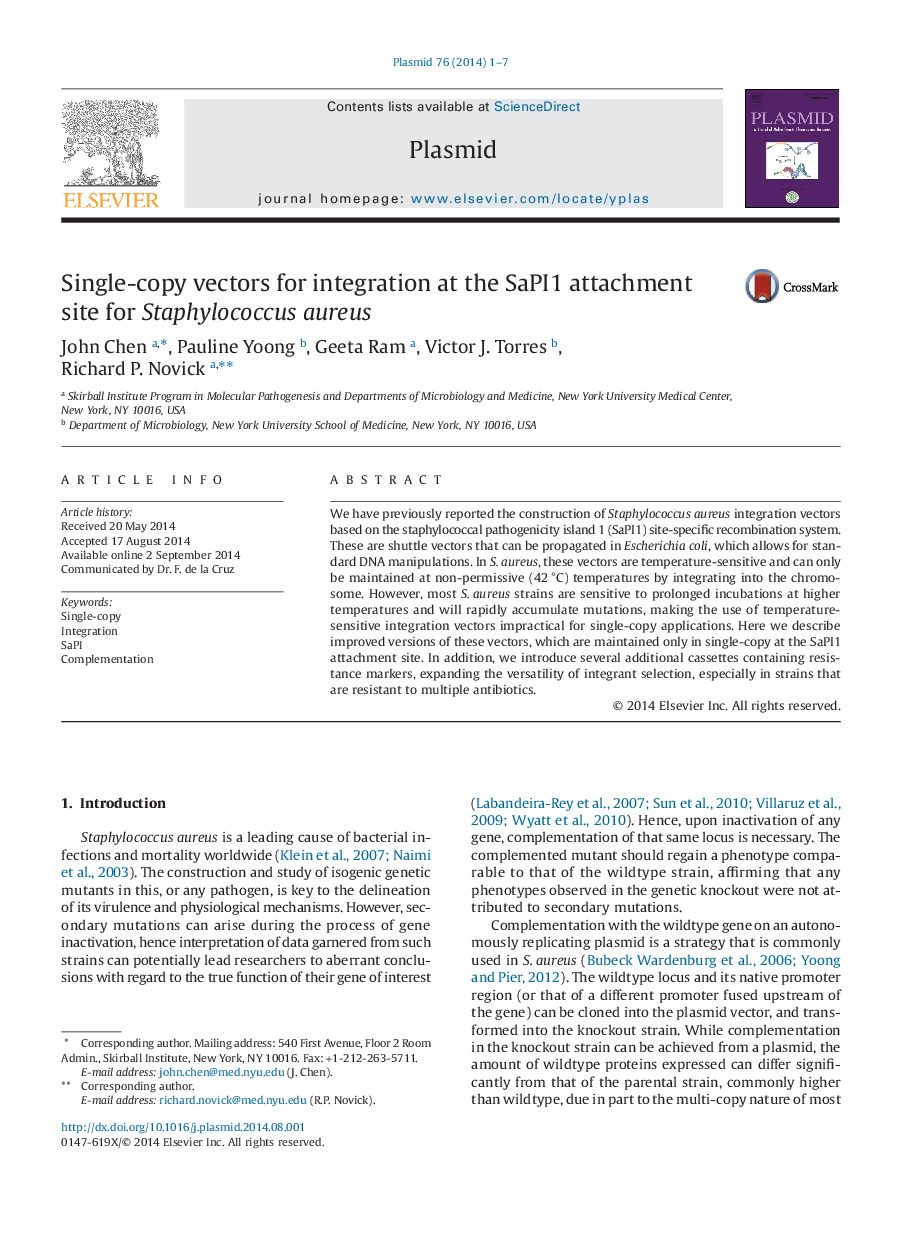| Article ID | Journal | Published Year | Pages | File Type |
|---|---|---|---|---|
| 2824095 | Plasmid | 2014 | 7 Pages |
•We describe an improved set of shuttle vectors for single-copy integration at the SaPI1 attachment site.•We introduce three additional cassettes containing resistance markers.•We highlight the stability of the SaPI1 site-specific integrated vectors.•We present a comparison of gene function restoration using the SaPI1 integrated vectors with that of an extrachromosomal plasmid vector.
We have previously reported the construction of Staphylococcus aureus integration vectors based on the staphylococcal pathogenicity island 1 (SaPI1) site-specific recombination system. These are shuttle vectors that can be propagated in Escherichia coli, which allows for standard DNA manipulations. In S. aureus, these vectors are temperature-sensitive and can only be maintained at non-permissive (42 °C) temperatures by integrating into the chromosome. However, most S. aureus strains are sensitive to prolonged incubations at higher temperatures and will rapidly accumulate mutations, making the use of temperature-sensitive integration vectors impractical for single-copy applications. Here we describe improved versions of these vectors, which are maintained only in single-copy at the SaPI1 attachment site. In addition, we introduce several additional cassettes containing resistance markers, expanding the versatility of integrant selection, especially in strains that are resistant to multiple antibiotics.
